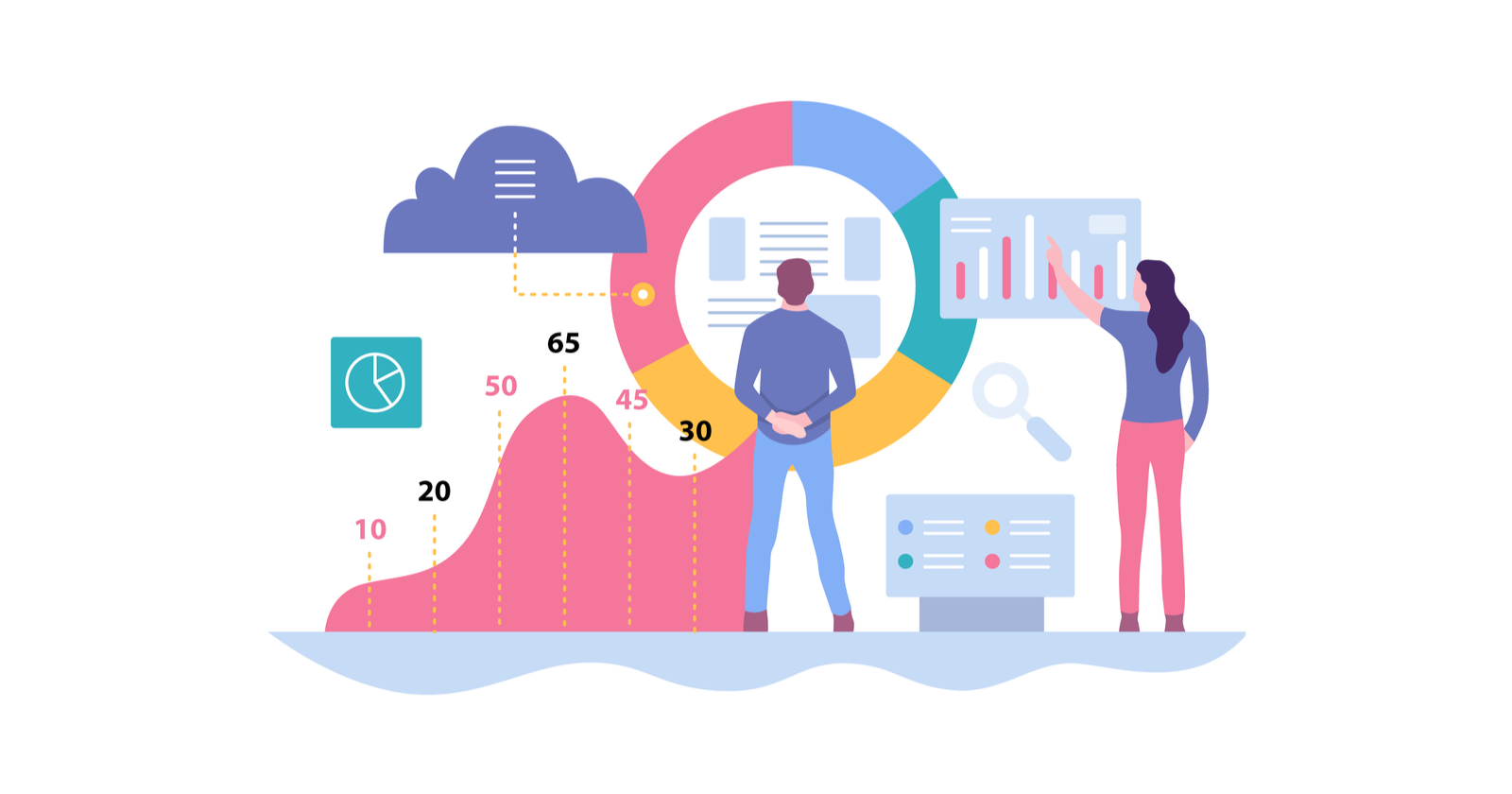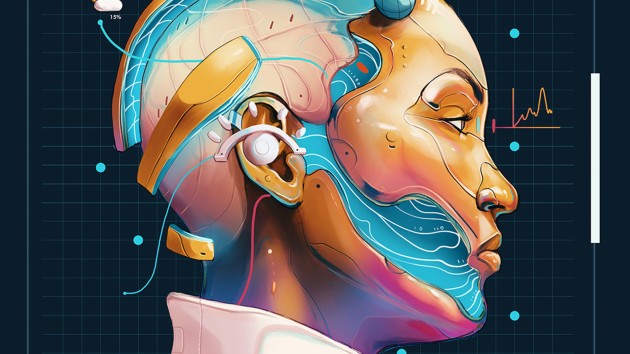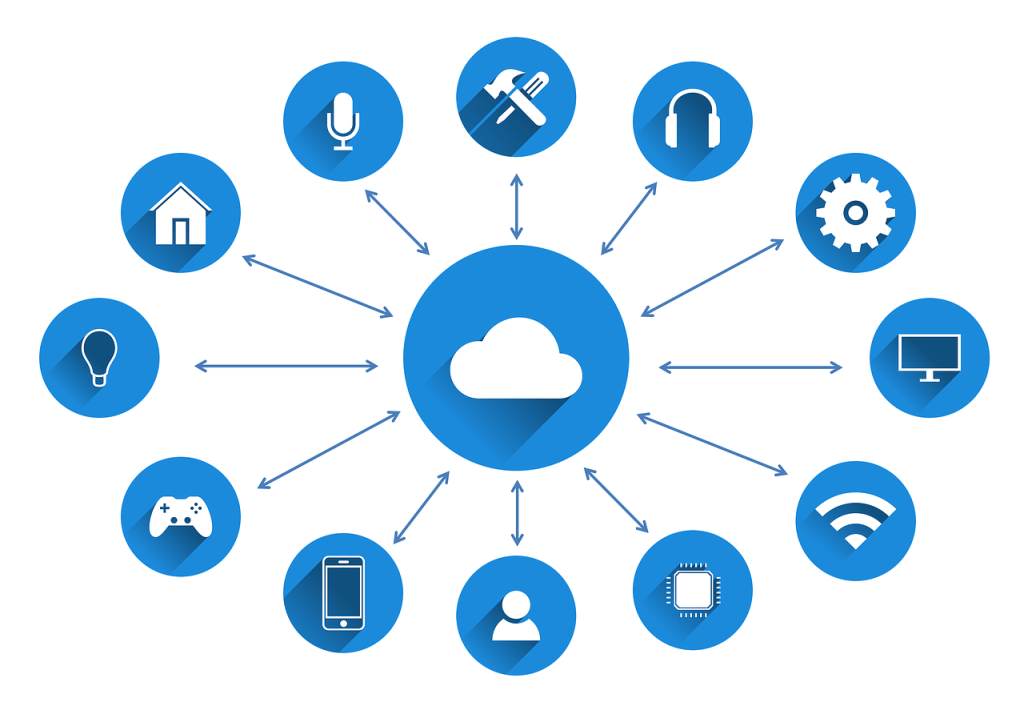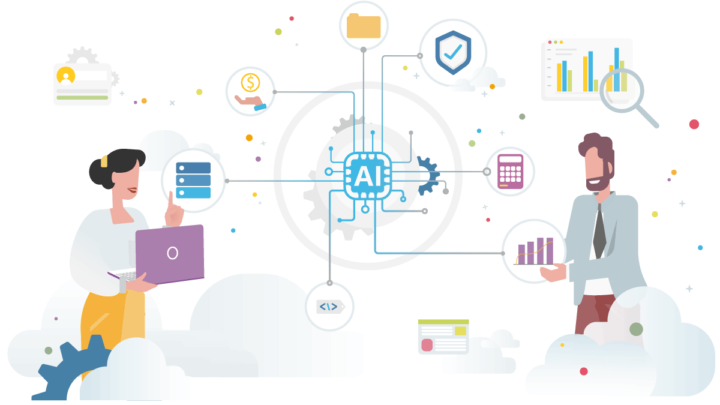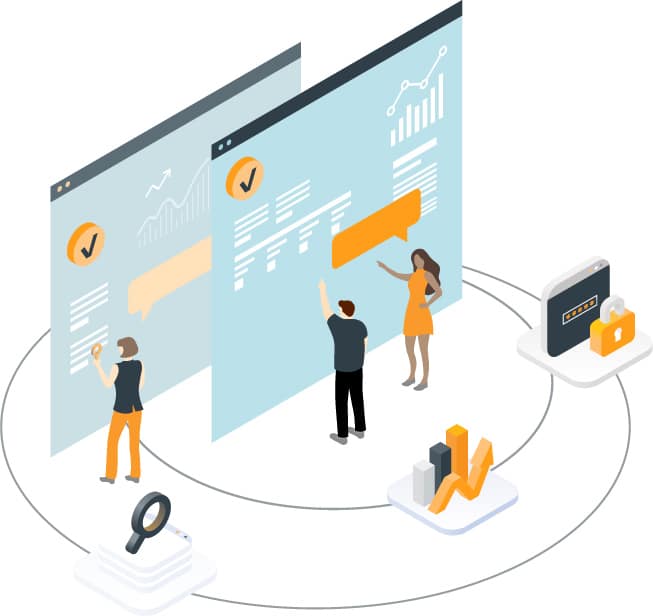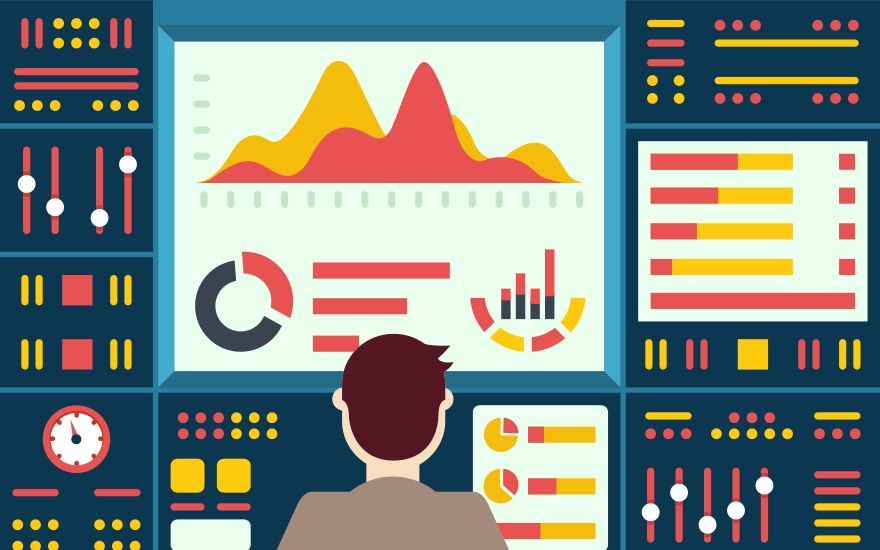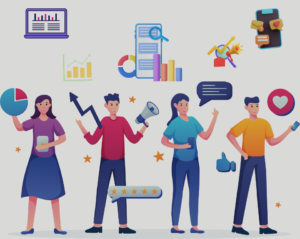At the beginning of 2020, we expected significant breakthroughs in the analytics world throughout the year. But what broke through was the pandemic, and it halted most of the innovations we were awaiting.
It would be unfair to say that we made no inroads in 2020, but COVID-19 has derailed progress and left countries in an uncertain state. Especially with regards to AI and ML, model-based data will need additional tweaks for them to work.
With technology’s development, it has made faster inroads, and the role of data and analytics is more critical. Businesses are inculcating the idea of automation in a more complex manner and are ingraining it deeply into their ecosystem.
This year, some technological advancements have been able to grab the eyeballs of the tech world. Some of them promise to cut costs, whereas the others are more about evolution and giving us an insight into tomorrow’s world. With improved vendor support, a bigger talent pool, and the pandemic re-emphasizing its importance, it is imperative to expect significant advancements in the analytics world in the future.
In this white paper, we take an opportunity to dive more in-depth to discuss ten analytics trends that will take center stage in the next few years.
AI will become smarter and more responsible
Artificial Intelligence (AI) is no longer the experimental uncertainty that it was when people first came to know about it. With higher adoption, organizations also realize that traditional techniques are fast becoming inefficient and redundant in many cases. It has propelled them to rediscover the art and find newer ways to imbibe it.
Not only the techniques, but the traditional infrastructure is inefficient and is showing signs of age. With the help of ensemble and federated learning, brands are looking to discover new ways to harness AI. COVID-19 has further ensured that the old models are dependent on reactions (read: historical data) and are no longer viable for most businesses, and they are looking to shift to proactive ones.
To solve these issues, organizations are making sizable investments in newer chip architectures such as neuromorphic hardware. The focus is on utilizing AI with DSML (Data Science and Machine Learning) to reduce reliance on expensive centralized systems that require high bandwidth. The dynamic workflow would not only introduce new use cases but also reduce the complexity and risk involved in the traditional approach.
These newer, more sophisticated technologies would need experts to fully utilize their potential. Organizations may resort to upskilling or hiring third parties to discover the world of potential that smarter and more responsible AI presents. Newer tech comes with different kinds of risks, and we will need to exercise responsibility for better adoption and derive value from it.
1. Developing decision intelligence
Decision intelligence (DI) began with use cases in limited industries such as banking and insurance. With time, organizations are quickly understanding their abilities and using them for risk management, cross-selling, supply chain management, and similar strata.
The new-age decision intelligence is a mix of traditional, conservative disciplines with a newer adaptive system. It ensures the deployment of decision models that are in line with the expectations of the business and its behavior pattern. Current business requirements require better use of business analytics to improve their decision-making abilities.
Decision intelligence is embedded in software and augments in collaboration with human intelligence; it aids in automating decisions and addresses structured parts of semi-structured decision processes. If the algorithm cannot be pre-defined, it uses analytics and decision techniques to enhance the result.
With improvements in decision intelligence, it reduces the time and effort needed to deploy advanced, faster solutions. It also enables experts to apply AI and ML to excel at predictive decision-making and automate decisions without needing the help of professionals. It also helps in elevating the decision logic part of the software to make it more adaptive without having to fiddle with the other parts of the application.
An optimum decision intelligence strategy involves pairing multiple AI and decision modeling techniques with intelligent process management and applicable decision thinking methodologies.
More and more businesses will adopt cloud services
According to Right Scale’s annual State of the Cloud Report for 2019, 91 percent of businesses employed a public cloud, whereas 72 percent opted for a private one. 69 percent of them went for a hybrid option.
For the uninitiated, employing the cloud may seem to be a costly affair, but if you optimize its usage, you get ample opportunities to make it bearable. With several aspects of it growing at a varying pace, data and analytics leaders are struggling to find the right balance and the correct use cases and workloads, which is further propelling costs involved.
New cloud-first offerings are ensuring most organizations will shift to the cloud eventually, but they will have to ride the wave to gain the most out of it. With cost optimization being one of the focus points, they should focus on achieving efficient workloads and limiting funds to data and analytics. It would be most beneficial for their business.
Also, some organizations have started resorting to edge analytics. Together with the cloud, it ensures that they manage all their IoT (Internet of Things) better. It also enables automated decision-making and uses non-central points for analyzing data. Owing to this, it is faster, more accurate, and loads more quickly compared to traditional data analytics methods.
The pandemic has forced even the most conservative brands to pay heed to the cloud and the opportunities it offers. The newly enforced WFH model also ensures that it drives most of the innovations taking place in the data and analytics scenario. With people and data becoming more diversified and distributed, there is an increasing need for a central data architecture that can manage it all.
Age of the X analytics
Most of the data we see around us is unstructured. The term “X analytics” is an umbrella term referring to a range of structured and unstructured data. It includes video analytics, text analytics, and others. When AI first came on the scene, it found a way to differentiate between different types of content difficult. The developments in this field have opened new avenues and are helping the organization employ new data-based techniques.
The world is gradually shifting from consuming text-based to graphics-based content. X analytics is expected to become vital for businesses as the tools are ready for deployment. It is a perfect foil for those looking to transform, innovate, and expand.
X Analytics also brings accessibility to a host of cloud-based AI services along with the requisite tools to allow them to go mainstream and easily accessible to every organization. The fact that most businesses are looking to figure out new ways to use analytics further provides more grounds for X analytics to conquer.
2021 is all set to be the year for graphics-based content. With X analytics at the fore, organizations can create unique datasets that will allow them to push newer data-based products and services. It also has the potential to solve critical environmental and societal issues that humans have found difficult to crack until now.
Augmented data management Customer Data Platforms (CDP) has gained a lot of traction in the last year or so. The availability of data in fragmented form can be challenging to handle and use optimally. An IBM report states that “bad data” has led to a loss of USD 3 trillion annually in the USA. Addressing the issue has been on the organizations’ priority list for a while, but they haven’t had much success.
The inculcation of CDP will help organizations collect data from all the available sources. It would also be a lot easier to organize, tag, and find the most relevant information from the available data. The addition of a customer data platform means there is only one API endpoint to deal with and optimize. Irrespective of the tool in use, organizations can quickly track back the data lineage and understand the information in a much better manner.
Also, CDP’s addition means several continuing silos are no longer as apparent, and product teams can measure crucial KPIs more convincingly.
Augmented Data Management
A Gartner report suggests that by 2023, augmenting data management will free up 20 percent of organizations’ time by reducing their reliance on IT specialists for low-impact data management tasks that are repetitive in nature. Gone are the days when machines merely performed a series of functions. Today, AI and ML engines work in active collaboration with them across a host of tasks ranging from the mundane to those that require specific skills. We are in the era of augmented data management.
Most organizations are moving toward the cloud, and we expect the market share to exceed 90 percent in the next few years. It will be essential for them to adapt to the new styles and harness the complete gamut of data created due to this move. With Artificial Intelligence (AI) and Machine Learning (ML) becoming far more common than five years ago and manufacturers trying to add them wherever feasible, we expect augmented automation to become more pervasive and an uncluttered approach.
45 percent of organizations state that data integrations would be one of their two priorities to automate by 2021. Augmented data management can rejig the current work processes to optimize them and utilize metadata analytics to examine large sets of data.
Development of graph analytics
Modern businesses face a host of complex new-age problems that are beyond the traditional analytic framework. These require complex use cases and the deployment of complex infrastructure involving multiple sources of external data and internal units. Graph analytics is a set of analytic techniques which ensure keeping relationship insights intact even while dealing with complex entities.
We have experienced graph analytics being around for a while, but it has vastly been limited, and capabilities undermined. Together with the cloud, it can leverage its scalability and can act as a critical enabler of natural language processing. It can also help in accelerating data generation amongst AI and ML-powered networks.
Graph-based databases are the future of relationship analytics. It takes into account people, places, and things and uses deep insights to understand and establish their relationships. Laced with AI, it also lets organizations create emergent data management and data catalogs, which help them improve personalization and generate accurate insights. It leverages AI and ML capabilities by adding them to existing predictive models, and its commercialization will open new avenues in the future.
Its use cases are multi-dimensional, and brands would need to incorporate it into their workflows to unearth patterns never seen before. It is also expected to be a torchbearer in developing new skills and applications in the data and analytics sector.
Development of data exchange and marketplace
If you are infusing your infrastructure with AI and ML, you will need a lot of data. With X analytics, the demand for data has become more pervasive and diversified. It has allowed data marketplaces to act both as platforms and products, offering a host of services. The ability to utilize data from an external source is a significant value addition for both the public and private sectors. It is also opening up avenues for innovations in data and analytics.
The use cases of data exchange and marketplaces are multi-dimensional. They can be used to solve in-house issues or global predicaments such as health, climate change, and similar matters. In a tryst to cater to people better, these data exchanges have begun data preparation and cataloging to make locating information more accessible.
Data exchanges and marketplaces are centralized hubs offering open data, commercial data, or unique organizational-based third-party data. Due to stringent data privacy laws and regulations, the congregation becomes far more meaningful and improves accountability and efficiency. It also enables organizations to delve deeper into the world of analytics and create new models or fine-tune the existing ones to align them with their goals better.
Better inculcation of Blockchain
The global spending on Blockchain solutions can cross USD 17.9 billion by 2024.
Blockchain is a breakthrough in the world of power-hogging and selfish data managers. Its unique mechanism allows for a decentralized trust that utilizes immutability to disperse power along with the network. Even though blockchain has been around for a while, the regulatory issues have not allowed it to evolve beyond limited use cases.
To win over blockchain, enterprises will require developing additional skills that work together with the existing ones, such as data, process integration, and application. With time, we expect it to become easier to comprehend and use, which will enable multiple data and analytics implementations.
We expect to experience a host of trusted exchanges in the upcoming years. The results can aid in data sharing, leading to robust and unbiased analytical decision-making. But it is imperative to understand that the external data entering the network is unverified and will require a sophisticated and stringent foreign governance model.
In the data and analytics sector, we can experience setting up blockchain smart contracts with trusted exchanges. It will open up multiple use cases that can range from validating a person’s COVID-19 immunity to land contracts. It also has potential application in the medical equipment sector, and given the flexibility of the underlying mechanism, it can expand further.
Focus on real-time personalization
It has been some time since organizations have been continuously harping on personalization. We see the trend continuing in the future, and brands will further look for new ways to differentiate themselves from the competition.
With more and more organizations realizing the importance of social listening, they are rapidly employing tools that can help them excel at it. With its help, they are generating critical insights for understanding the expectations of their customers and how to target their audience. The ability to draw critical metrics further helps them understand the impact of their moves and tweak their upcoming endeavors accordingly.
Gone are the days when personalization was merely about on-site behavioral logic. It has evolved and has assumed a larger form factor. Especially for marketers, are on a constant tryst to inculcate it throughout the value chain and provide a tailor-made approach to every prospect.
The most basic example of personalization is the CLV (Customer Lifetime Value) model. It helps marketers track the best customers and reward them with regular offers and provide an optimized experience for them.
Cooperation is the future of analytics
2020 has been a pandemic-struck year, and it is almost about to end. But we are yet to see anything convincing as a solution to the dark times. We hope the next couple of years will be better and will lead to massive development in the analytics industry. One thing is It is apparent – whatever the scenario, organizations that are proactive and ride the wave would benefit the most.
In the years to come, we expect specific investments that will help organizations develop new skills to cater to the fast-changing analytics world. Those stuck in the traditional models would find it difficult to sustain the pervasive world created by analytics. Also, brands need to get their priorities right and ensure that they are in line with the expected changes.
It would be a time of collaboration, and we expect multiple departments to come together and help in achieving operationalization. Bringing in a diverse set of people who are not affected by changes but are willing to reinvent themselves will be the key to surviving and thriving in the upcoming years.

